Branding for small businesses can -
- Help customers connect emotively
- Build brand loyalty & advocacy
- Get you an edge over your competition even if they've higher marketing budgets and rankings.
You know the usual - business cards and presentations. Those are old school branding tools. Yes, they work. But there are a lot of online branding tools that can boost your business growth within a limited budget. In this post, find out about top 5 tools for branding your business online and how you can use them precisely for branding.
1. Social media
It's cheap. It's also time consuming. But you can't just ignore it.
Customers prefer to communicate with brands over social media instead of email. They feel it's more personal and fast.
However, the approach of many businesses to use social media for branding almost always backfires. Why?
1. They pick too many social media platforms
You don't need to be everywhere. Pick one platform you're going to focus the most on, and then, use a few more as a fall back option.
Why do you need a fall-back option? Think of all the people who put all their eggs on Vine. When it went down, their brands lost complete visibility. This may happen to Instagram too. So, you can't use just Instagram because it's the big thing. Obviously, focus the most on the biggest platform right now but spend a little time on the rest too.
Businesses strive to have a unique voice that helps them brand on social media.
For example, this innovative mattress brand - Casper.
They've the funniest way to engage their audience on twitter.
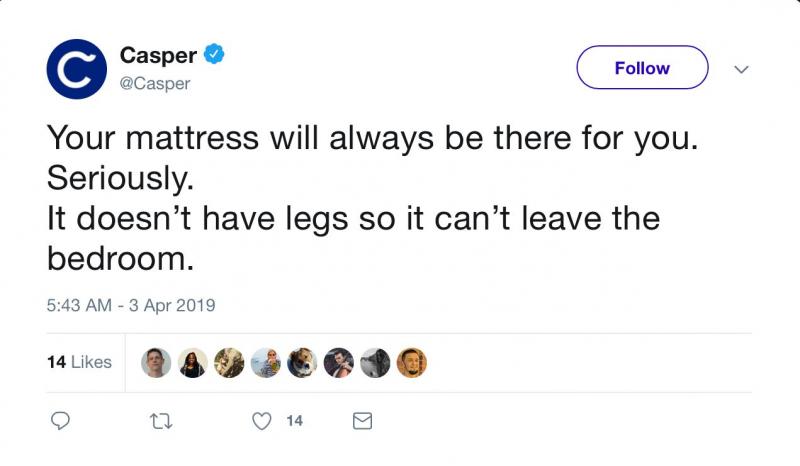
It's the unsaid rule on social media - you don't sell. You engage. Then, how do you get that influx of orders? Casper has a unique way of talking about its features, and yet make people laugh.
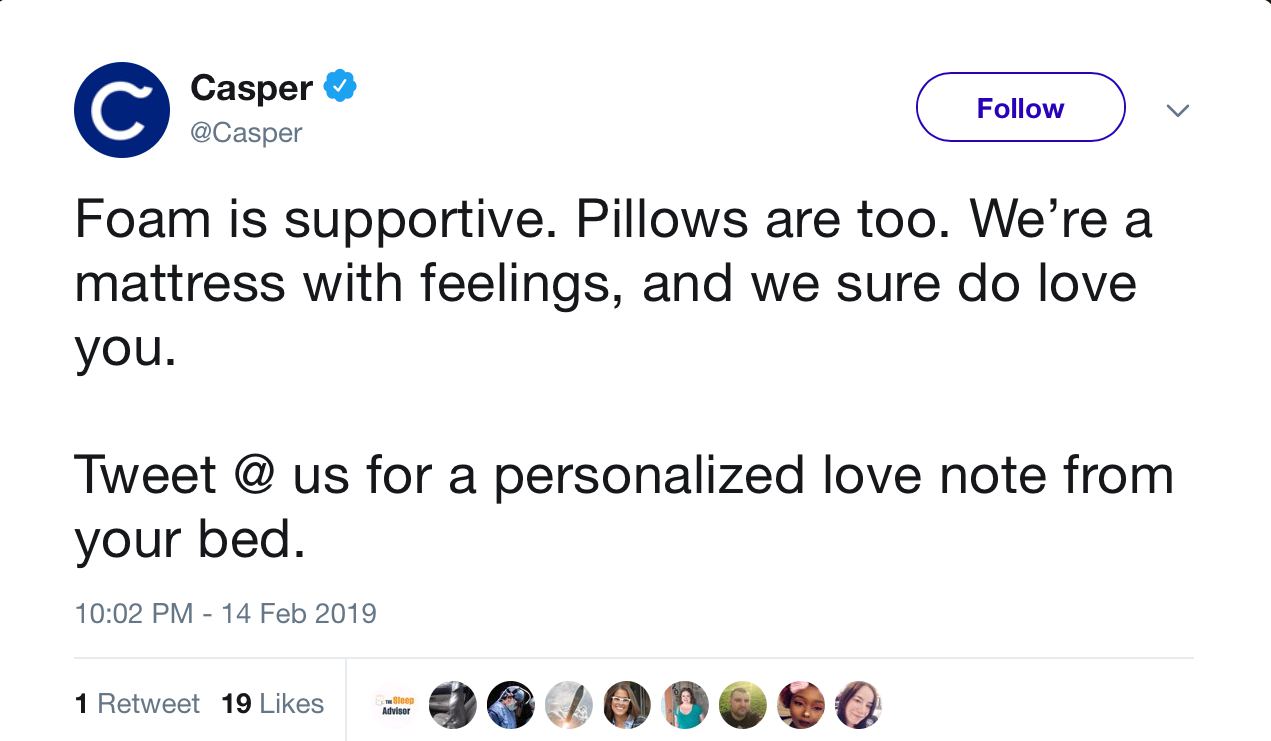
They maintain the same fun-loving brand while experimenting with different forms of posts - like polls, images and videos.
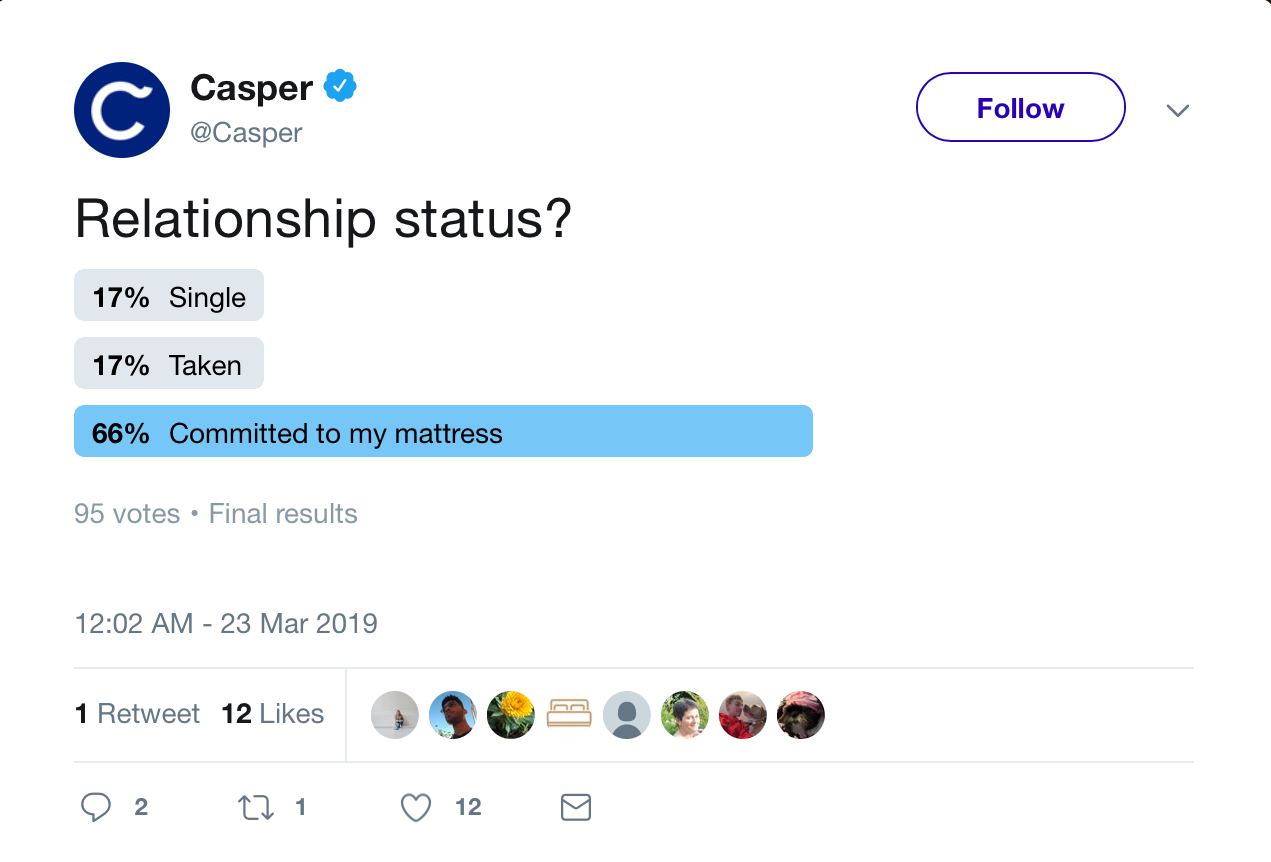
Lastly, they never forget to make it fun while interacting with their customers. Be it love notes for valentine's day or replying to support queries, they always maintain their brand voice.

Another great brand that does branding on social media right is L'Oreal. The brand uses Instagram to give more insight to customers about their products and operations. They also have a hashtag #lifeatloreal which they use to encourage their staff to showcase the culture of their organization.
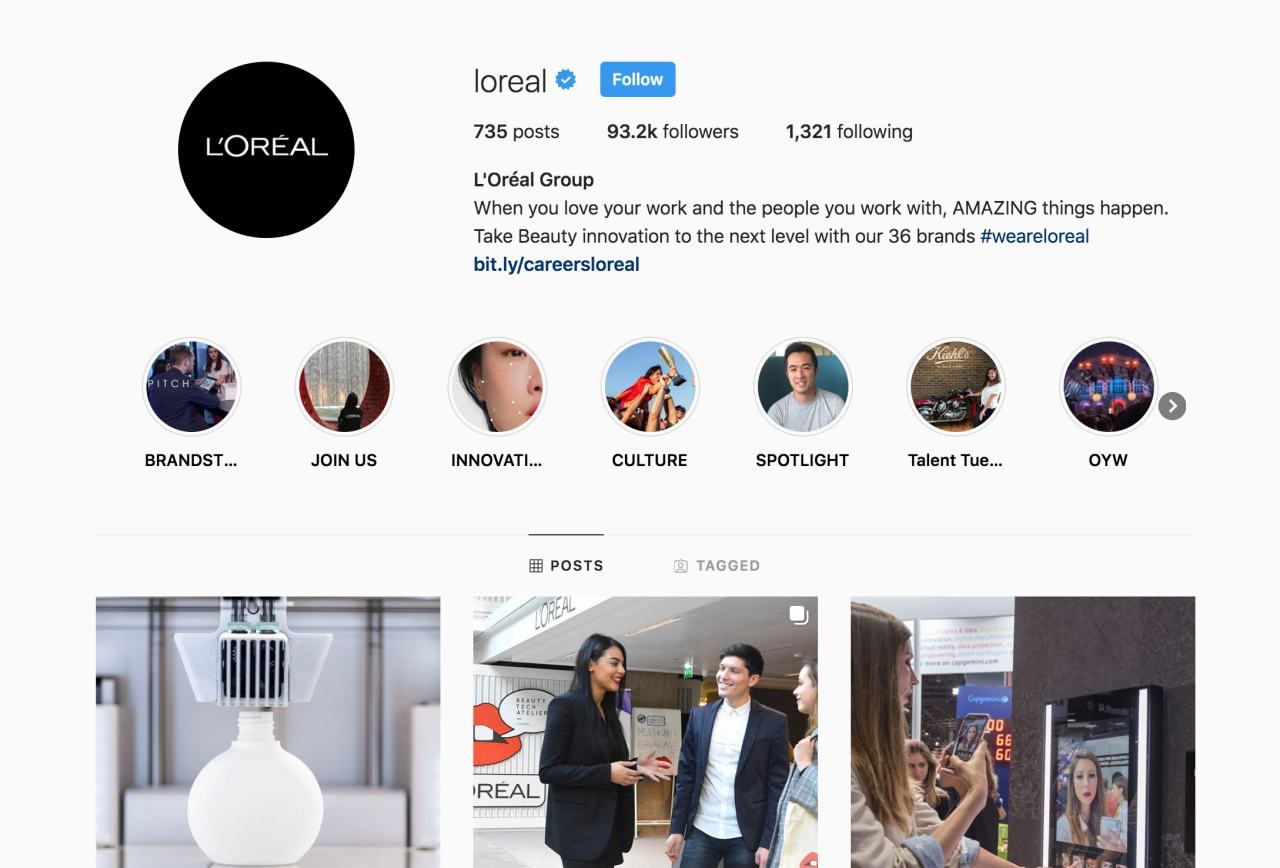
Airbnb is another great example of a business that uses social media, particularly Instagram, to establish what their brand stands for.

2. They pick the wrong social media platform
Just because Instagram is the thing right now doesn't mean it will help you brand your business. You need the social media platform where your target audience is hanging out.
For example, if you do business with CEOs & CMOs of companies, it's highly unlikely you can reach them through Instagram. Similarly, you won't reach many teenagers on LinkedIn. Think of your ideal customer and figure out on which platform they're.
3. Branding isn't putting on logos
Many marketing agencies are selling you incomplete branding services. For them, branding is ensuring you've the right colors and logo on whatever you post on social media. It's true but that's a small part of branding your small business.
What type of content you create and what's the tone of that content makes a major difference, not just the logos.
Let's take the example of Casper again.
If you take a look at the images they share, you'll find the consistency in colors and branding, not just their logo on the bottom of a picture. They use different shades for different types of image posts - for example, a fun quote is put on their signature blue color while quizzes are put on a lighter shade with their signature blue color from the logo carefully incorporated into the design. The entire profile has a similar color scheme and voice - fun, & cute tweets.
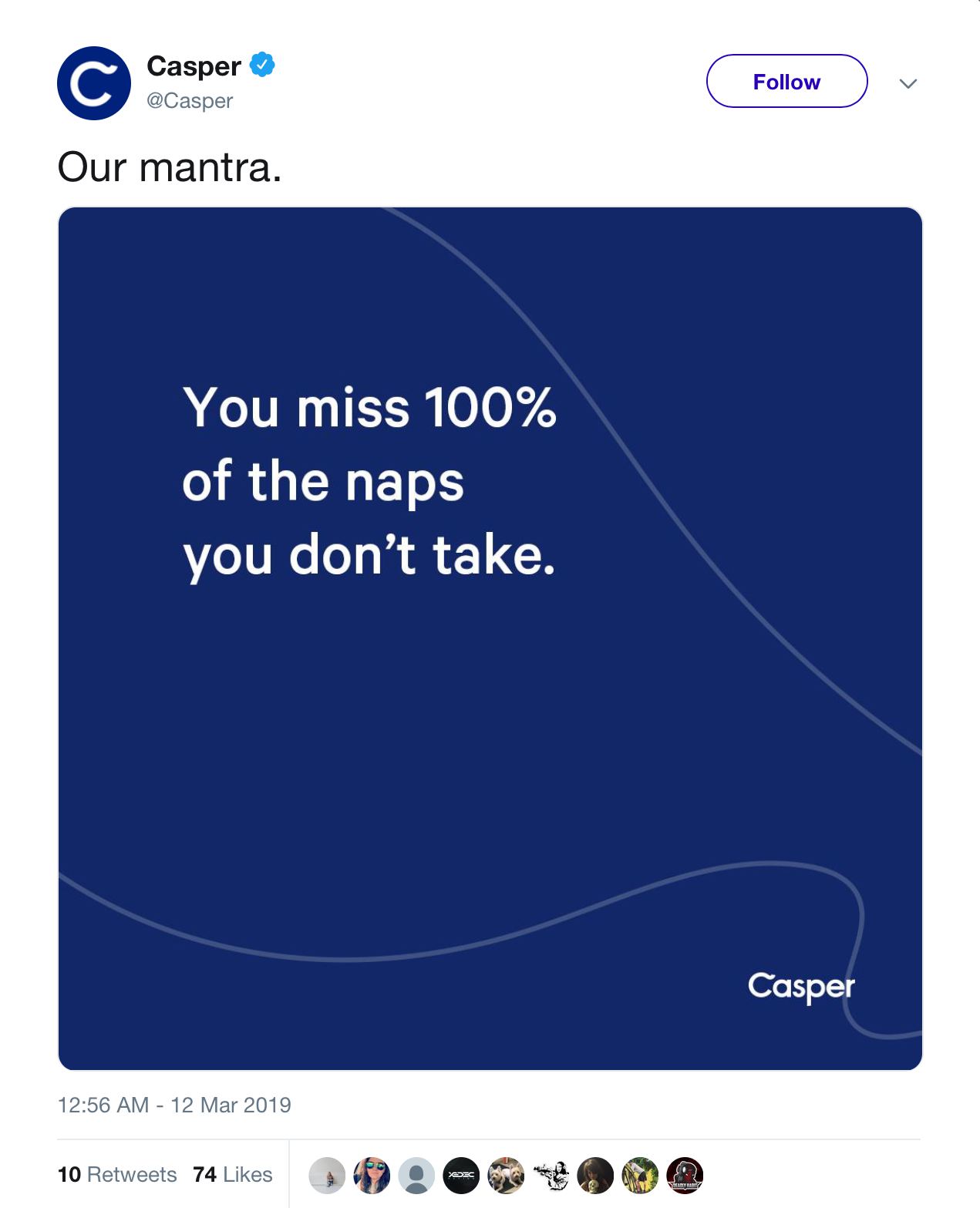
Another great example of a brand that's highly consistent and unique with their branding is Wendy's. Just look at their bio to begin with!
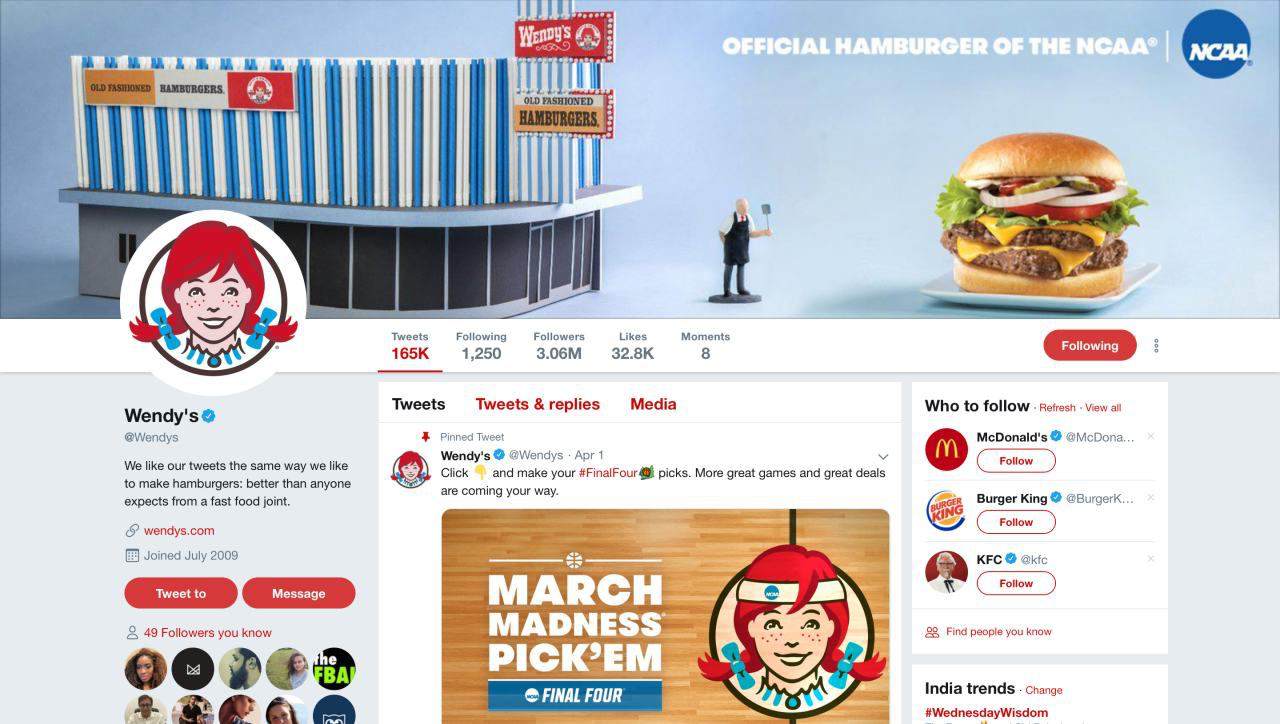
2. Blog
Most businesses that work on just search engine optimization never use the full potential of a blog. A blog can be used to boost search engine rankings, kickstart a content marketing campaign and even, for branding.
Use your blog to share company news, behind the scenes and give people a taste of your business' culture. Consumers crave to know that information about the brands they're using.
You can also look for what questions people are asking - about your brand, and create blog posts to address those questions.
Doing so will help you create a personal bond with your consumers that can build that brand loyalty. You can also consider doing a video blog for even better communication.
Listen! It's not just for the peppy new brand on the market. Old established businesses have (had to) give into this form of online branding too. For example, General Electric uses a series of video blogs that highlight the work of their employees. They're especially known for absolutely impressive Facebook video marketing.
Sorry for too many mattresses, probably I woke up too early to work on this piece, but Purple Mattress is one of the best examples of how you can embrace video to brand your business. Their 'how to use a raw egg to determine if your mattress is awful' video has over 170 million views. And I bet you won't be able to watch it just once.
3. Host an event
You know it already! Events like a sidewalk sale, a launch party or even a community barbecue are a great way to network and brand yourself. However, these require big budgets and take time.
In the digital world, you can use an inexpensive way to host such community events - webinars.
When promoted well, webinars can be a great way to interact with your target customers and let them know of the latest developments in your company.
4. Press release
Press release is a great free way to promote your business and work on its branding. But like every other marketing strategy, it's not really free. You'll need a person who can build good relationships with local reporters and get you featured in newspapers on a timely basis.
Guest blogging is another great tool for branding, but a lot of leading publications do paid features, so you may want to set a budget before you set out to implement this strategy.
5. Website
Lastly, don't forget the face of your brand - your website. It's a great branding tool - consistent color scheme and consistent experience is what you need for creating an unforgettable brand.
Remember this about branding your small business
- It needs to be carefully planned
- It needs to be consistent - design & content wise as well as frequency wise
- It can't be done with just one thing - a cool logo or an impressive blog. You need to incorporate all the strategies to create a perfect fit that you can sustain for long-term.
If you're ready to take the next step for creating a consistent brand experience online, schedule a free consultation with our branding experts now!


